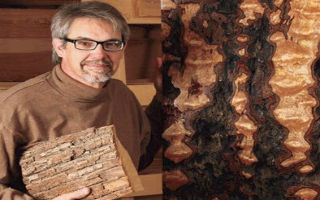How To Keep Bark On Your Wood Projects
I am starting a few craft projects using whole chunks of tree limbs, limb crotches, and natural divides. I want to keep the bark on the pieces. I’m going to cut pieces to length, and then need to use some kind of sealer on the pieces before I start carving or sanding, and I want to retain as much of the bark as possible for the look I am trying to get.
Is shellac as good a sealer as anything else, as far as being able to penetrate into the bark and make it stable enough for a belt sander or router? I’m leaning toward shellac because its viscosity may allow it to penetrate the bark more easily than a thicker liquid like polyurethane.
Answer from the Experts: Keeping the bark on chunks of wood, in my experience, is a hit-and-miss business. Some species are reputed to shed their bark regardless of treatment (hickory is one with a bad reputation in this regard), while others are more likely to not shed their skin — walnut and basswood have a good reputation here.
Basswood bark's tight bond makes it ideal for bark art, as it is unlikely to be disturbed in the process of completing your project. There are a couple of things that you can do to improve your chances of keeping the bark on your wood:
- Cut the stock in the winter when the sap is not flowing. Bacteria or mold growing under the bark will reduce its bond to the wood
- Store your harvested pieces in a cool, dry place. Or, if you can put it in a kiln right away — that is even better
Before I answer your question directly, if you find loose chunks of bark, CA [cyanoacyrylate] glue (the thin stuff often used by turners) can be used to secure them. You can indeed use shellac to help stabilize the bark for machining, but it won’t “glue” loose bark back onto the log. What I have done is thin the shellac down by 50% and really soak the bark. This allows it to get into small cracks and crannies. Then I apply a thicker coat of shellac which reinforces the first one. I used Zinsser SealCoat the last time I did this, and it worked well. You can then apply an additional top coat of poly over the shellac should you choose, but you would not need to do so.
Keep the inspiration coming!
Subscribe to our newsletter for more woodworking tips and tricks





